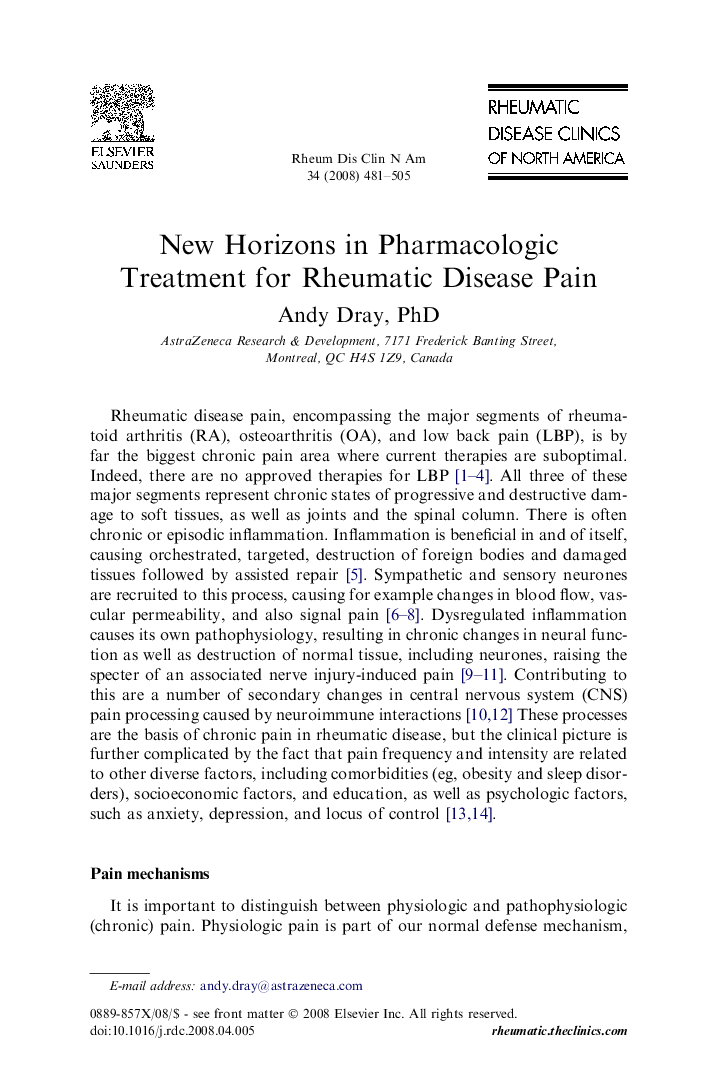| Article ID | Journal | Published Year | Pages | File Type |
|---|---|---|---|---|
| 3390859 | Rheumatic Disease Clinics of North America | 2008 | 25 Pages |
Chronic pain is the major concern for patients with rheumatic diseases, such as low back pain, osteoarthritis, and rheumatoid arthritis, but current therapies are suboptimal. Animal models and emerging clinical data indicate that there is a complex spectrum of neurologic changes, manifesting both nociceptive and neuropathic pain, which are driven by joint pathophysiology and abnormal excitability in peripheral and central pain pathways. A variety of mechanisms and molecular drivers have been identified that can support future segmentation of musculoskeletal pain patients. Emerging therapies are directed to targeting inflammatory mediators, ligand and voltage regulated ion channels, as well as increasing inhibition through monoaminergic modulation. Finally, neurotrophic abnormalities may be restored through the modulation of specific neurotrophins. These developments are supported by increasing emphasis on the clinical understanding of the neurologic changes in pain patients to enable confident translation to clinical application.
